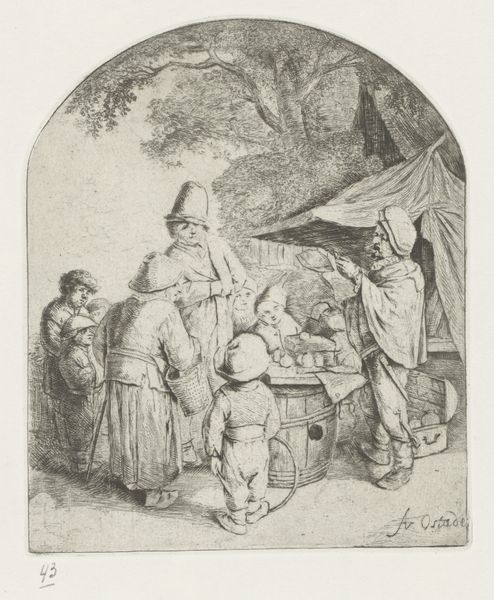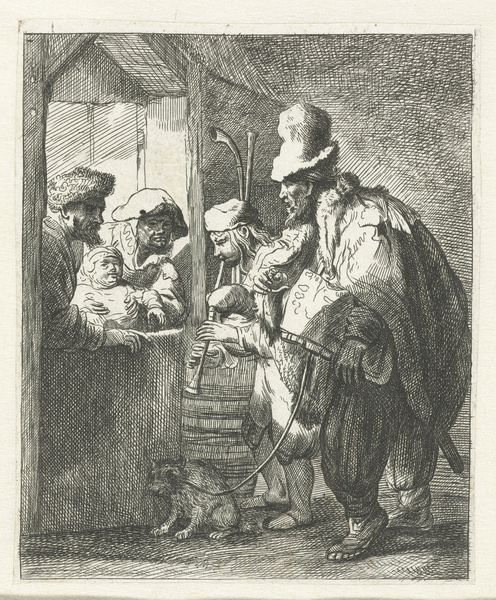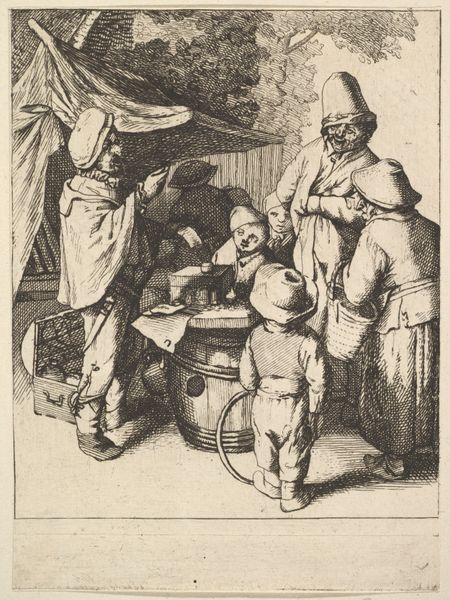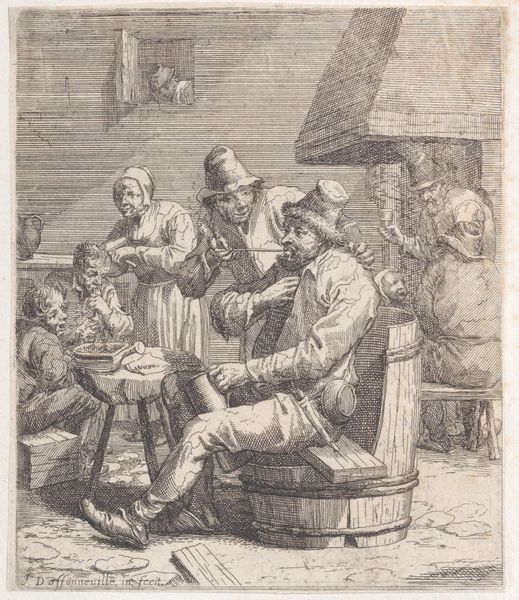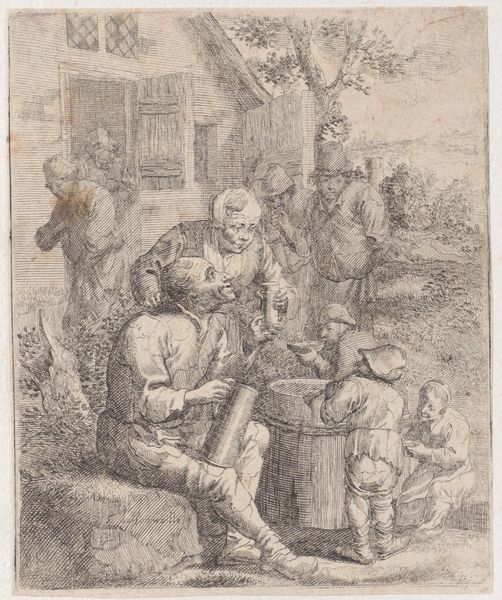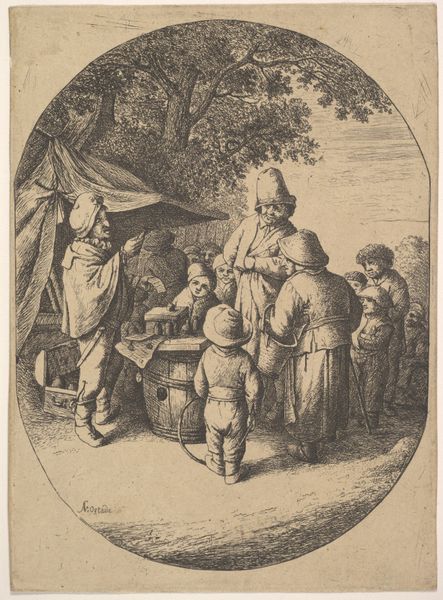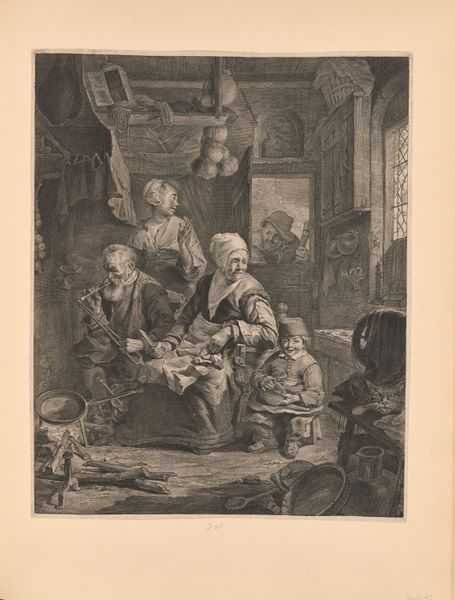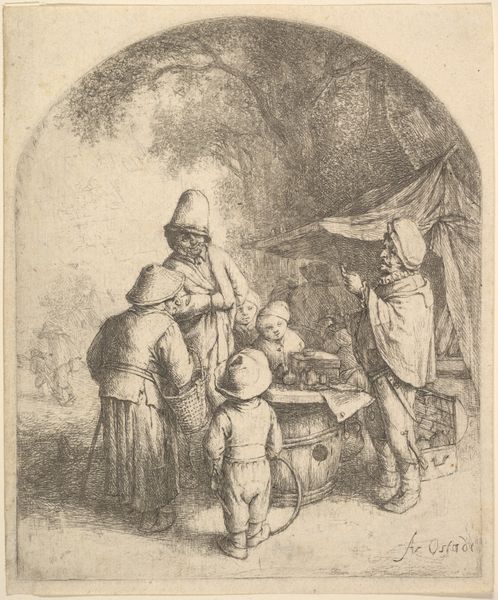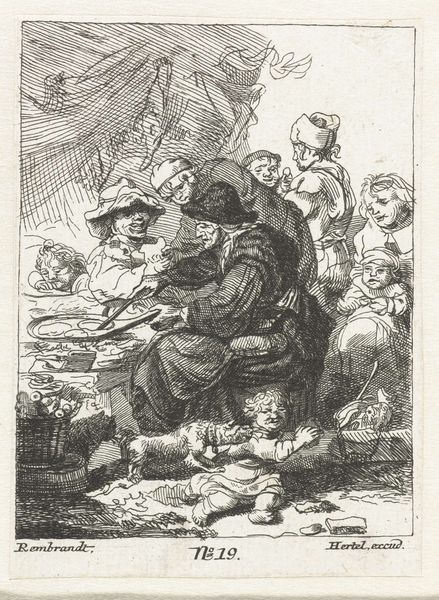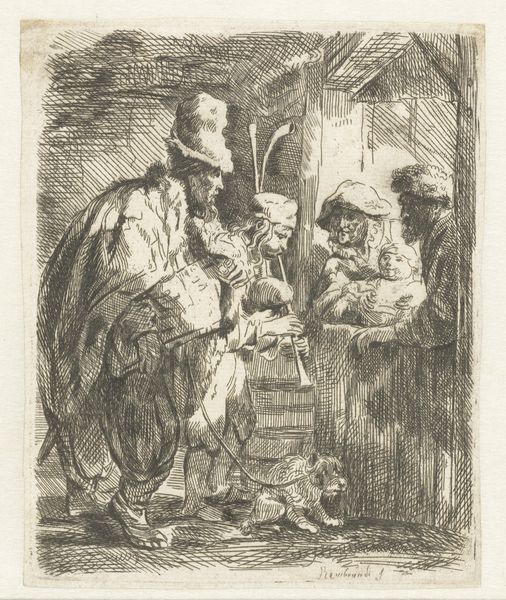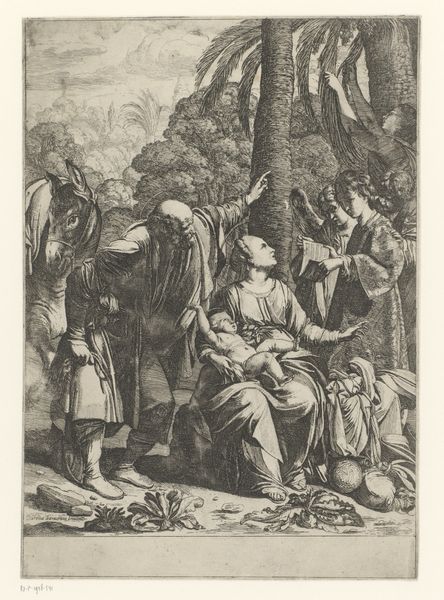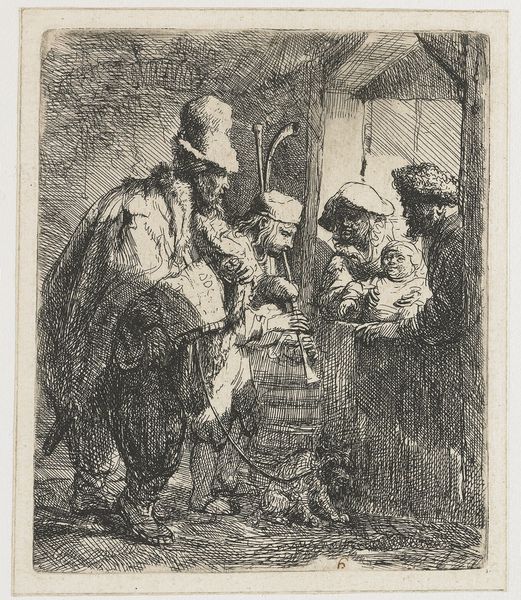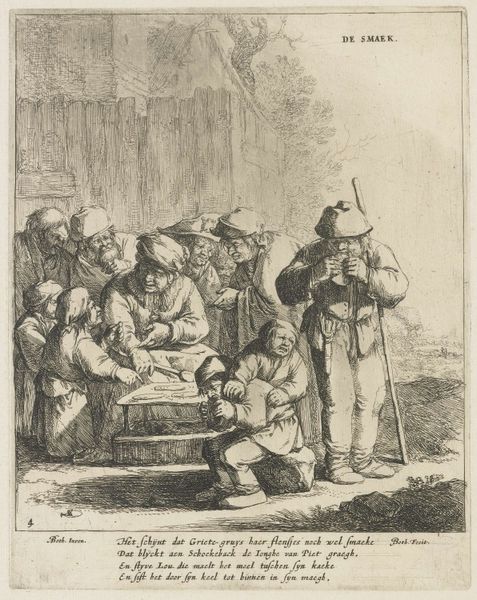
print, etching
#
narrative-art
#
baroque
# print
#
etching
#
group-portraits
#
line
#
genre-painting
Dimensions: height 145 mm, width 122 mm
Copyright: Rijks Museum: Open Domain
Editor: This etching from 1732, “Rattengifverkoper” by Christian Wilhelm Ernst Dietrich, has quite a narrative feel. The line work is so detailed! The crowd of figures surrounding the vendor gives me the sense of a lively marketplace scene. What stands out to you? Curator: The image speaks volumes about cultural anxieties and the role of the traveling salesman. The rat poison seller is, on one level, providing a crucial service. But isn’t there a certain suspicion inherent in his position? The huddled masses, the close composition...doesn't it evoke anxieties about the unknown dangers lurking in the domestic sphere and social fears? Editor: I see what you mean, it’s almost a stage, the way everyone is clustered around the table. Do you think the objects on the table hold symbolic value too? Curator: Precisely! The table itself is a fascinating point. It acts as a visual barrier, but also as a site of exchange, doesn’t it? And think of the contents - cups, powders - each a symbol, potent and possibly dangerous. It suggests a world of potential remedies but also potential deceptions. Does the composition also create a contrast between those being ‘helped’ and this singular charismatic, and potentially dangerous, figure? Editor: That makes a lot of sense! So, looking beyond just a literal depiction of a rat poison vendor, the print taps into deeper anxieties about health and trust in 18th-century society. Curator: Exactly. The brilliance here lies in how a seemingly mundane scene becomes a powerful cultural document. This wasn't just about rats, was it? But who has the power, how, and to what means. Editor: That is fascinating. I will never look at this piece the same way again. Thank you!
Comments
No comments
Be the first to comment and join the conversation on the ultimate creative platform.
